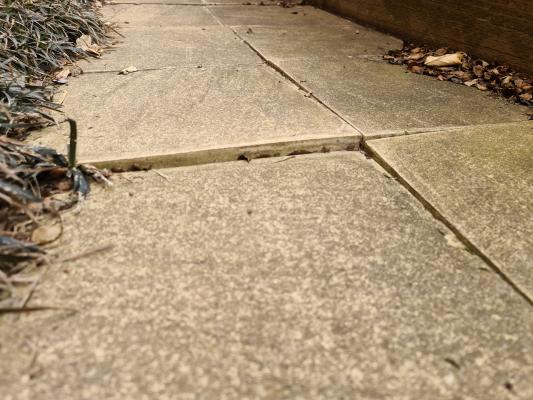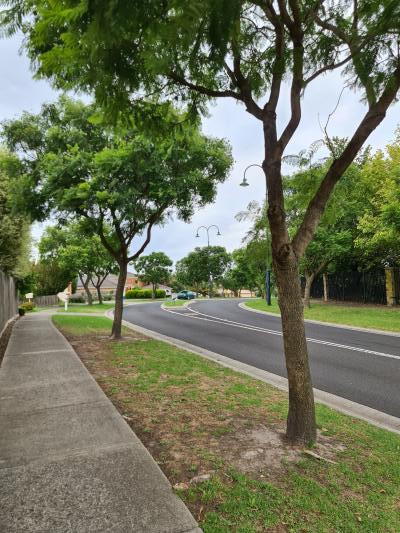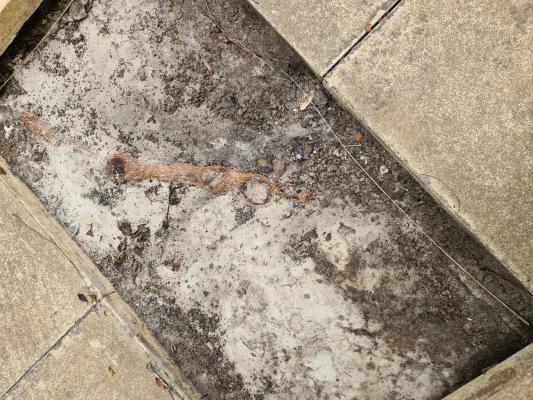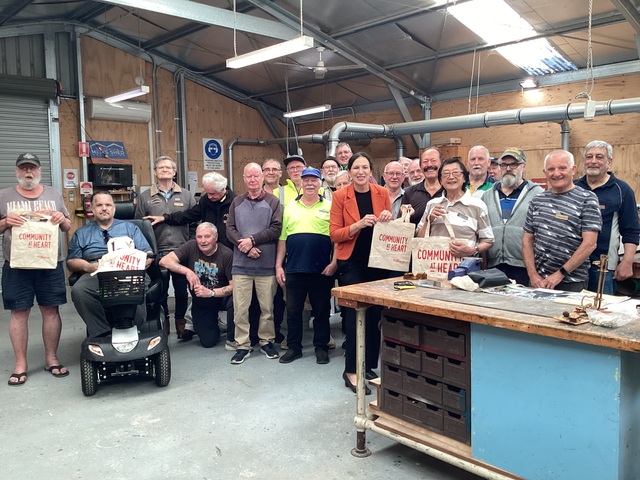A Narre Warren South retiree whose property is being invaded by tree roots is begging Casey Council to address the issue.
Irene Cavalieros has been watching in horror as roots from two jacaranda trees – on her nature strip – lift up pavers in her outdoor area and threaten to uplift her hot water system.
But the council is refusing to accept liability for the issue, leaving Ms Cavalieros with damaged property from the vigorous root system, which only continues to grow.
Ms Cavalieros first noticed the pavers shifting in March 2020, and contacted the council for assistance once she realised what was happening.
Since the tree is not on her property, Ms Cavalieros assumed the council would address it right away.
She said she was told there was a standard procedure to follow to report the damage, which she complied with, supplying an arborist report and landscape quotes to support her claims.
The independent arborist concluded that “the lifting and displacement of paving within the private property is attributed solely to roots of either or both trees located on the adjacent council nature strip” and found “no evidence of other causal factors”, according to the report.
The arborist recommended root pruning, the installation of a root barrier and the removal of the invasive roots on Ms Cavalieros’ property, as well as the reinstatement of paving to remove trip hazards.
A landscaper quoted Ms Cavalieros $9500 to fix the issue by installing concrete barriers to prevent tree roots from entering her property.
But all of that “wasn’t good enough”, she said, with the council denying any liability for the problem.
“They’re working for us, we’re paying them and they treat you like you don’t even exist,“ Ms Cavalieros said.
She has since approached the Ombudsman and Legal Aid for assistance but has been turned down.
Ms Cavalieros said she doesn’t have the money to install the barrier herself and wants compensation from the council to cover it.
A letter of demand sent by her solicitor to the council was what she hoped would be her last step – but it too was rejected by the council’s lawyers.
In a letter seen by Star News, National Claims Solutions, on behalf of Casey Council, told Ms Cavalieros “that property owners must accept that the need/desire for a greener environment will inevitably lead to complications linked to trees growing in close proximity to man-made structures”.
“Property owners must also accept some responsibility for choosing appropriate fencing and/or paving to be installed in the immediate vicinity of an established street tree”, the letter read.
Ms Cavalieros and her husband moved into the property 16 years ago, and she said they never anticipated the issues the trees would cause or the need to adapt their outdoor area to the possibility of creeping roots.
She added she supports the planting of street trees but expects that the trees chosen for planting won’t be “invasive”.
The council appeared to also take issue with the evidence Ms Cavalieros supplied.
Another letter from National Claims Solutions stated: “we dispute that an arborist is qualified to offer ‘expert’ opinion … Whilst there may be roots from the street tree growing under your client’s property, this does not automatically represent evidence the roots were the primary cause of any alleged damage”.
Ms Cavalieros said she has been shocked by the response from the council.
“I just want to scream. I can’t sleep at night,” she said.
“This is not what I visualised my retirement being.”
In a statement in response to detailed questions from Star News, Rhys Matulis, manager of governance at the City of Casey stated: “While council maintains urban nature strips and rural roadside trees as is reasonably practicable, council has no obligation to proactively inspect and maintain street trees under the Road Management Act (2004).
“This legislation reflects the growing expectation on the part of both the courts and the broader community that property owners must accept that the need and desire for a greener environment will inevitably lead to complications linked to trees growing in close proximity to man-made structures.”










